50+ SAMPLE Marketing Brief
-
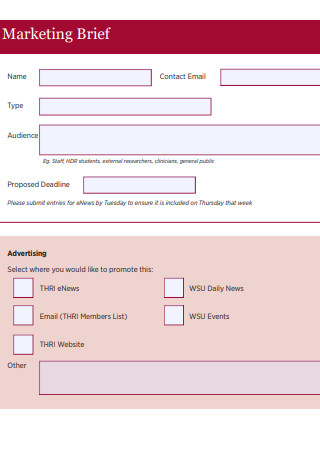
University Marketing Brief
download now -
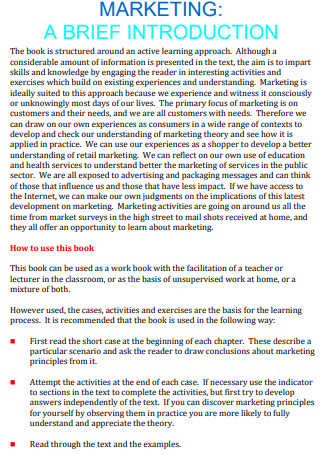
Marketing Brief Introduction
download now -
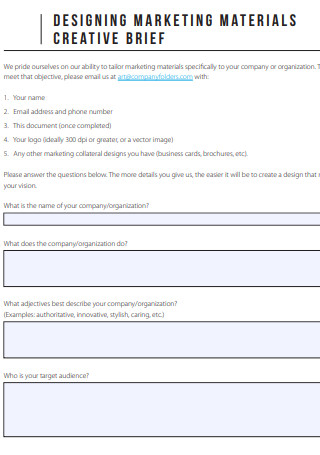
Designing Marketing Materials Brief
download now -
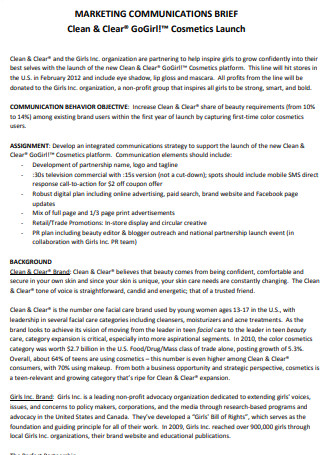
Marketing Communications Brief
download now -
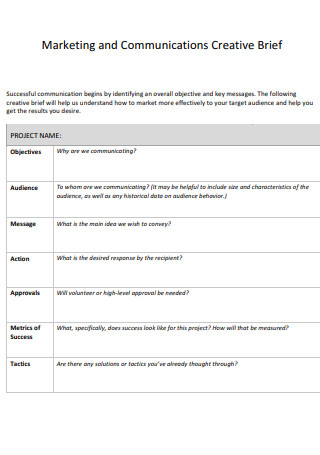
Marketing and Communications Creative Brief
download now -

Content Marketing Brief
download now -
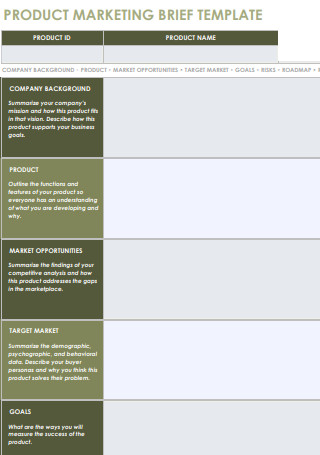
Product Marketing Brief
download now -
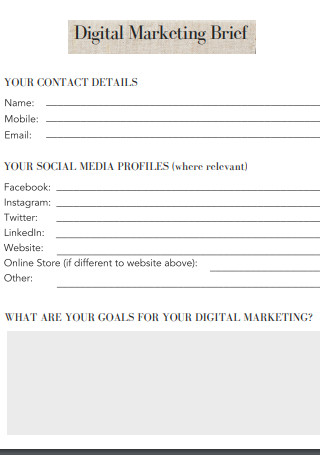
Digital Marketing Brief
download now -
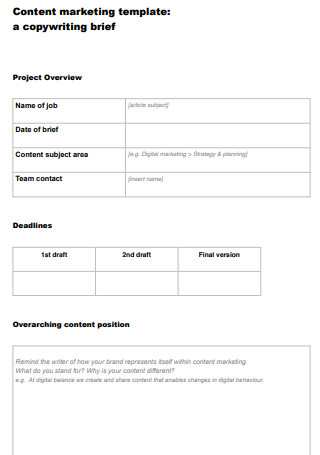
Content Marketing Copywriting Brief
download now -

Integrated Marketing Communications Campaign Brief
download now -

Evaluating Marketing Brief
download now -
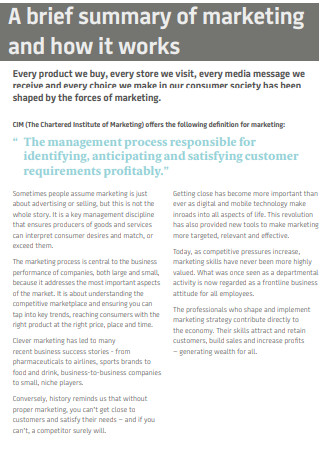
Marketing Brief Summary
download now -

Marketing Supplier Brief
download now -

Marketing Professionals Brief
download now -
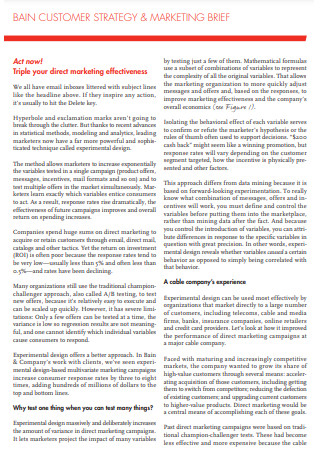
Customer Strategy And Marketing Brief
download now -

Curated Content Marketing Brief
download now -
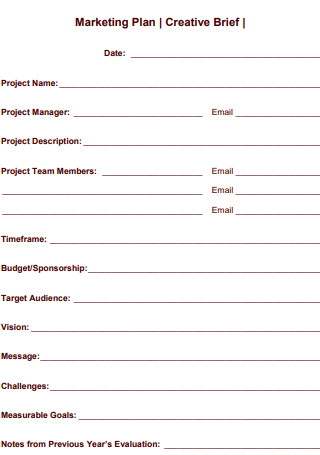
Marketing Plan Brief
download now -
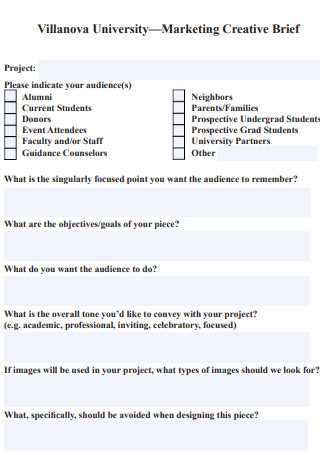
University Marketing Creating Brief
download now -
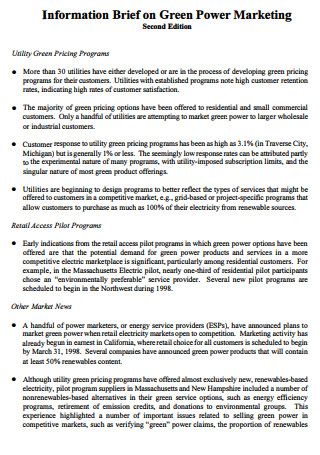
Green Power Marketing Brief
download now -

Food Marketing Brief
download now -
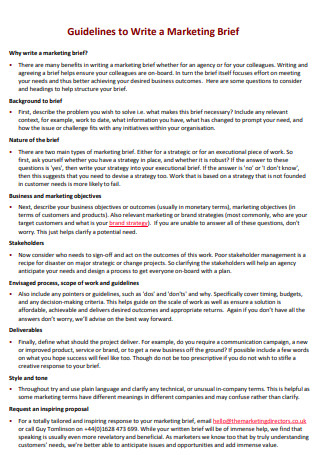
Guidelines Marketing Brief
download now -
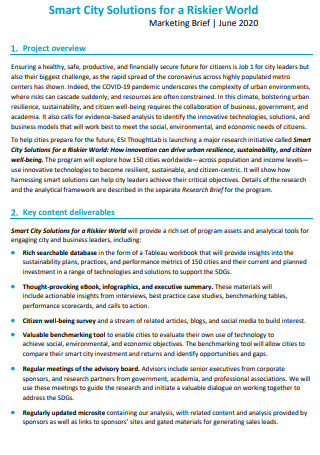
City Solutions Marketing Brief
download now -
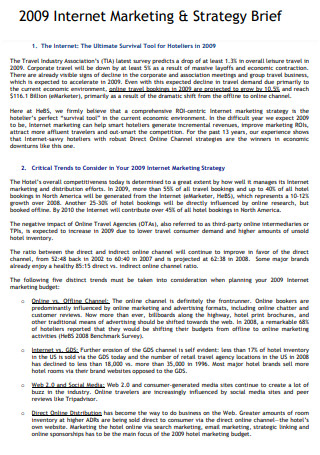
Internet Marketing Strategy Brief
download now -
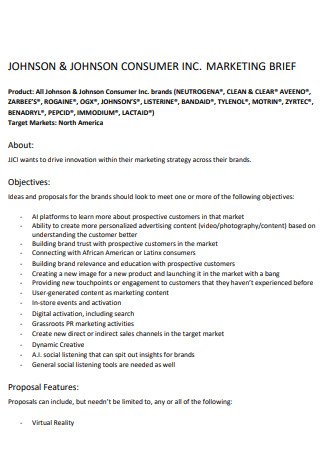
Consumer Marketing Brief
download now -
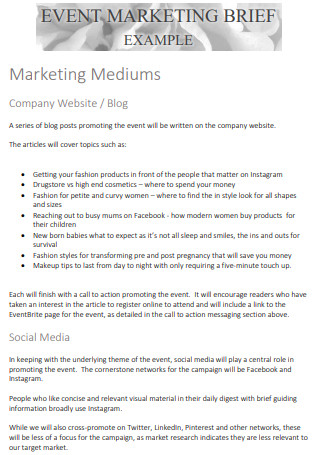
Event Marketing Brief
download now -
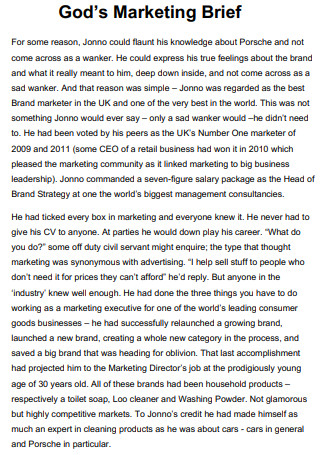
Event Marketing Example
download now -

Marketing Communications Job Brief
download now -
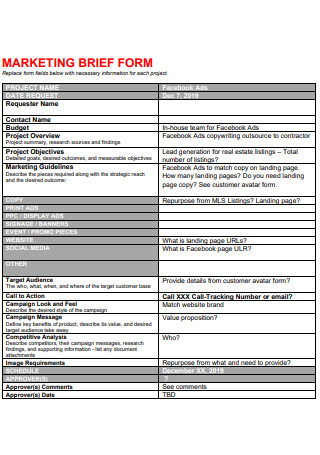
Marketing Brief Form
download now -
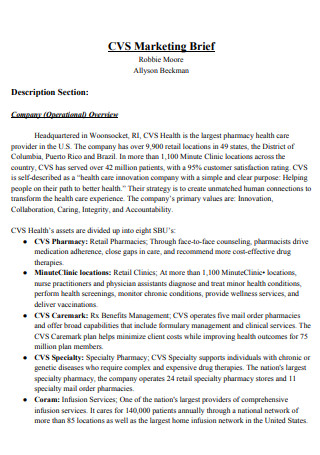
Marketing Brief Template
download now -
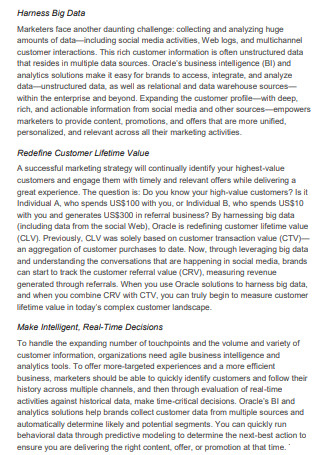
Customer Experience for Marketing Executive Strategy Brief
download now -
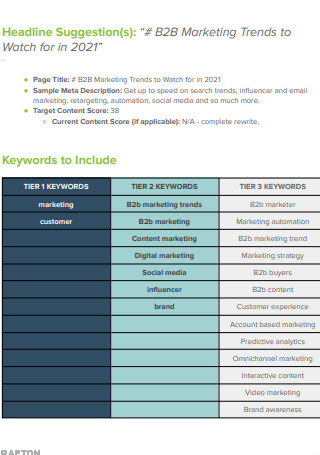
B2B Marketing Brief
download now -
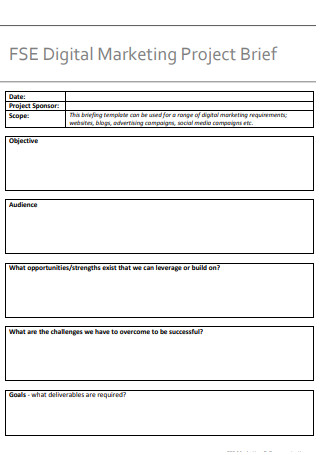
Digital Marketing Project Brief
download now -
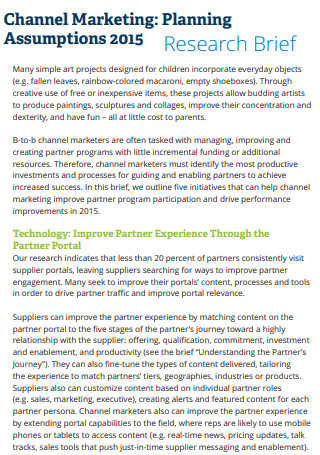
Channel Marketing Research Brief
download now -

Arts Marketing Brief
download now -

Tobacco Marketing Data Brief
download now -
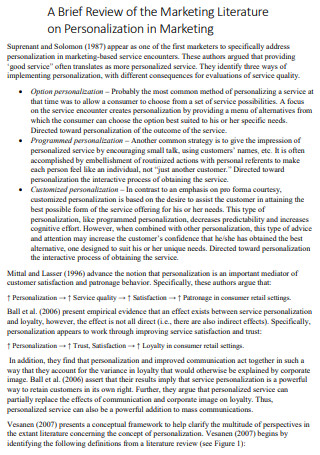
Marketing Literature Brief
download now -

Food Marketing Laws Brief History
download now -
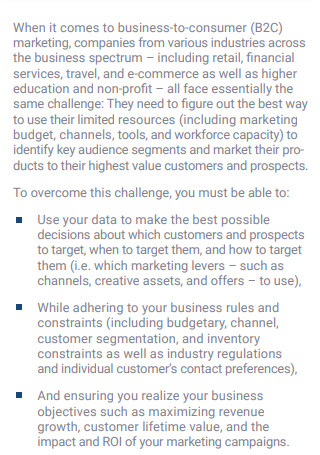
Marketing Campaign Optimization Brief Solution
download now -
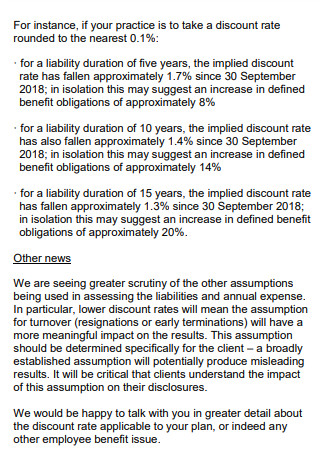
Marketing Brief Analysis
download now -
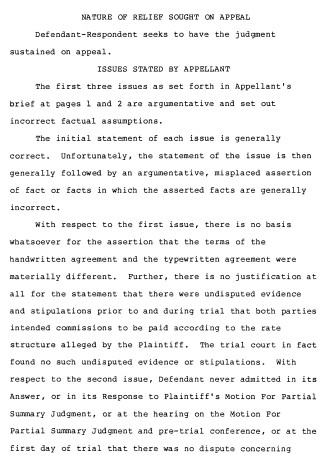
Marketing Brief of Respondent
download now -
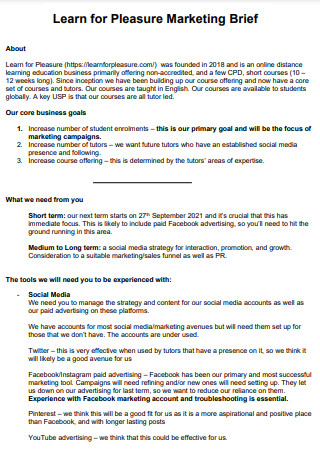
Pleasure Marketing Brief
download now -
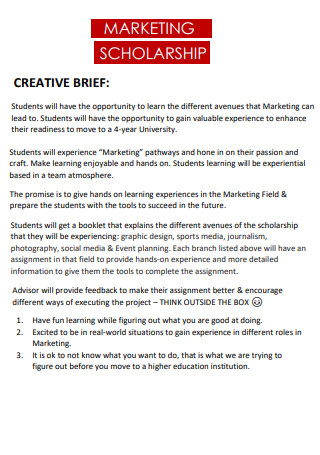
Marketing Scholarship Brief
download now -
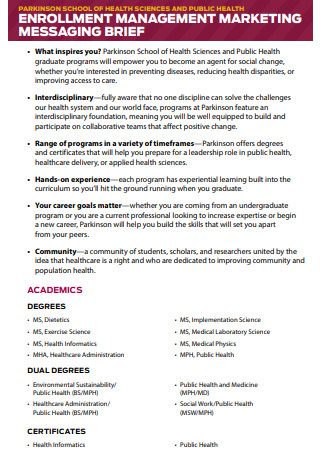
Enrollment Management Marketing Brief
download now -
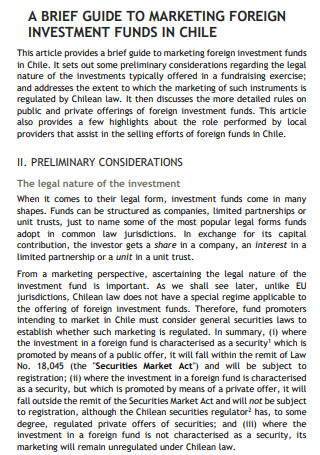
Marketing Foreign Investment Brief
download now -
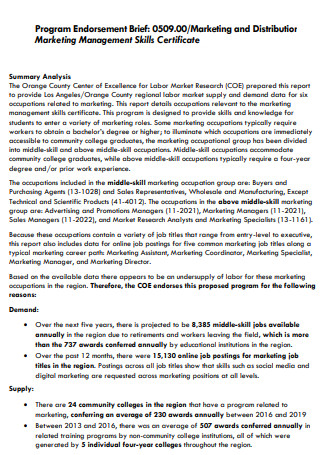
Marketing Management Program Brief
download now -

Marketing Creative Brief
download now -
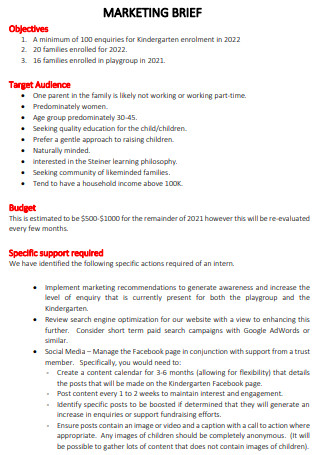
Sample Marketing Brief
download now -
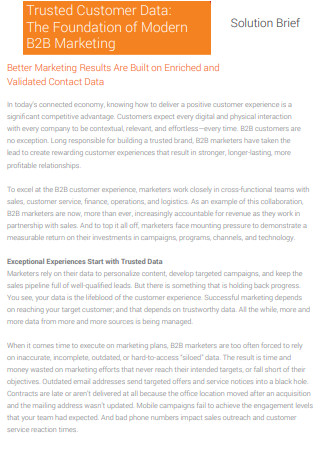
Modern B2B Marketing Brief
download now -
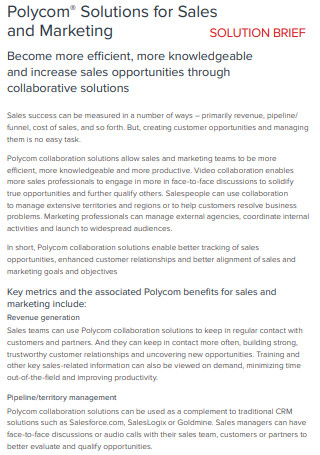
Sales and Marketing Brief
download now -
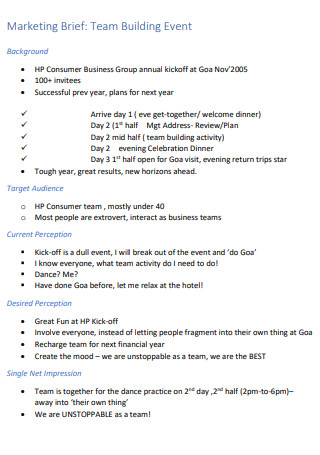
Marketing Brief Team Building Event
download now -
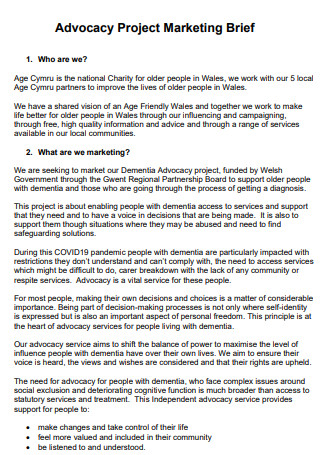
Advocacy Project Marketing Brief
download now
FREE Marketing Brief s to Download
50+ SAMPLE Marketing Brief
a Marketing Brief?
Benefits of a Creative Marketing Brief
How To Write a Marketing Brief
FAQs
What makes a good marketing brief?
What is a poor creative brief?
What constitutes an effective introduction?
Who is responsible for the creation of the creative brief?
What Is a Marketing Brief?
A marketing brief refers to a record that marketers use to ensure that their marketing and advertising are related to their target audience in the most appropriate way. With such a connection, you have a better chance of getting the information and strategies you need to meet your customers’ needs. Remember, the marketing summary does not include a complete analysis of what needs to be done. Instead, it highlights the key issues that need to be addressed. Customers are ready to spend more for the experiential qualities that matter most to them, according to statistics: 43% of customers would pay more for greater convenience, 42% for a friendly, welcoming experience, and 65% of customers believe that a positive experience is more influential than great advertising.
Benefits of a Creative Marketing Brief
Regardless of whether you’re developing a site or application, advancing another item, or attempting to refresh a brand, it would help if you had a creative marketing brief for your venture. This underlying work can require a lot of exertion prompting a task. However, it frames the establishment of a reliable and effective interaction from beginning to end. The following are seven reasons why you and your customers benefit from inventive preparation to direct your undertakings.
How To Write a Marketing Brief
There are countless approaches to get the advertising brief wrong. So how might you take care of business? Minor positions that require a speedy invigorate don’t need pages of documentation. Not assuming you need to have any expectation of being a deft promoting association. Yet, your brief should contain some essential data to get an opportunity of being perceived by the crowd, so the following innovative item addresses your issues: what are we saying, to whom, what do we need them to do, what are the mandatories, where will it run and when do we require it? What’s more, if you’re advising out a critical mission or another task with a few moving parts, your brief should be clear and concise while including all the fundamental data. So here, for the record, are the six stages you need to follow to have the ideal-promoting or creative marketing brief.
Step 1: Prepare the details of the project.
Include all necessary project details, such as the project’s and brand’s name, the timeline for each approval process stage, and the final due date. Additionally, include requesting the job, authoring the brief, and serving as the final approver. This last point is frequently overlooked, but it is critical because it will assist the creative team in determining how to shape their innovative proposal for the best chance of approval, thereby speeding up turnaround times.
Step 2: Propose a budget.
Budgeting is so critical — and so frequently overlooked — that it deserves its section. Too often, the marketer writing a brief will advise the organization to go as big as possible with their creative suggestion — when, realistically, the resources necessary to make it happen have been ruled out. All that means is that the innovative team will undoubtedly be sent back to the drawing board, and the marketer will be forced to pay for an additional round of creativity, adding unnecessary expense to the process. Research shows that labor is generally the highest cost of doing business, as any business owner knows. Employee wages, benefits, employee payroll, and other relevant taxes are included in labor costs, accounting for up to 70% of total business expenditures.
Step 3: Business Context
Two main areas need to be covered here. First, what is the business opportunity, goal, or problem that needs to be solved? Including this information in the marketing, summary allows the agency to suggest additional or different ways to meet this requirement that may not be the project for which you are using the outline. Include why the project is essential to the company and how it meets the strategic objectives. Second, include competitive analysis, market analysis, and any business history the creative team needs to know about. Name your primary opponents and their strengths and weaknesses. If the market changes locally or globally, describe how. And if you’ve tried a few things in the past that worked well or were bombed, be honest – share these experiences and you’ll save time and get to the next extensive campaign faster.
Step 4: Check your audience’s information.
One of the first things your creative team needs to know is who they are trying to reach and convince to take action. You may have created detailed people to include in your marketing brief. There can be a primary audience and a secondary audience. Add as much detail as you can. Also, describe the problem or weakness that your product solves for the target audience, how they think about your product, brand, or service, and any information that shows why they are likely to believe your promotional or marketing promise.
Step 5: Brand policies and obligations
FAQs
What makes a good marketing brief?
The majority of high-quality creative briefs are no longer than 1-2 pages in length. A brief does not have to incorporate all available data. The paper should be simple to read, scan, and act upon – it should take no more than five minutes to comprehend the project and its objectives.
What is a poor creative brief?
The terrible brief employs mandates to direct the creative outcome through a prescriptive list that forces the agency into a creative bind. With this inadequate brief, the agency will design a messy, unsightly “Frankenstein” advertisement in an attempt to patch things together.
What constitutes an effective introduction?
A strong opening should define your subject, provide the necessary information, and highlight your essay’s specific focus. Additionally, it must pique your readers’ curiosity. A firm conclusion will bring the article to a close while reinforcing your concepts in a broader framework.
Who is responsible for the creation of the creative brief?
Whoever has the most expertise about the client and the project is ideal for drafting the brief. The writer must be able to define the direction for the creative notion and implementation clearly. That is frequently the creative director. Writing an effective creative brief report requires considerable thought and practice.
A marketing brief template covering these components will arm any potential agencies with the necessary information to create a plan to achieve your marketing objectives. In general, your marketing brief is intended to assist in defining, planning, and evaluating the campaign or project as a whole. When you think about it, it’s as simple as establishing what all stakeholders must do, how they must do it, and by when they must do it.
